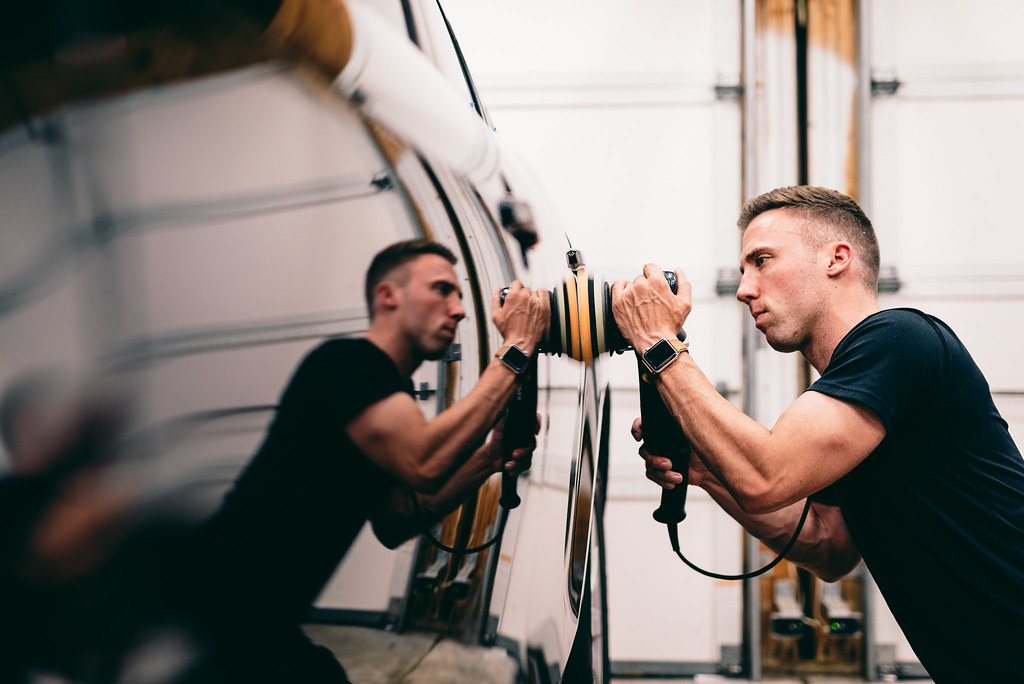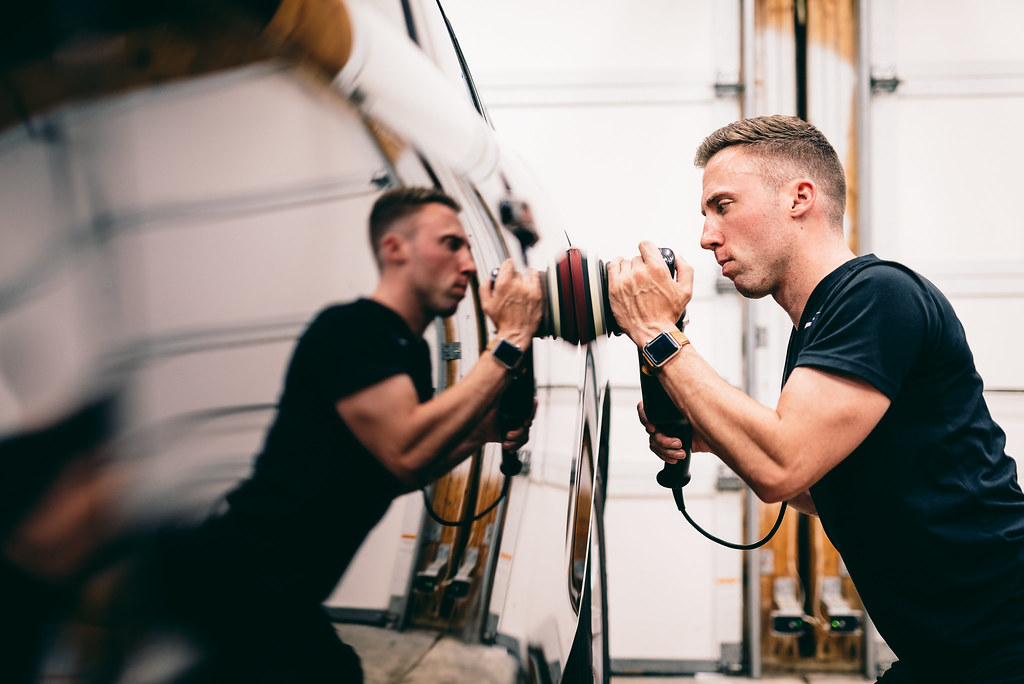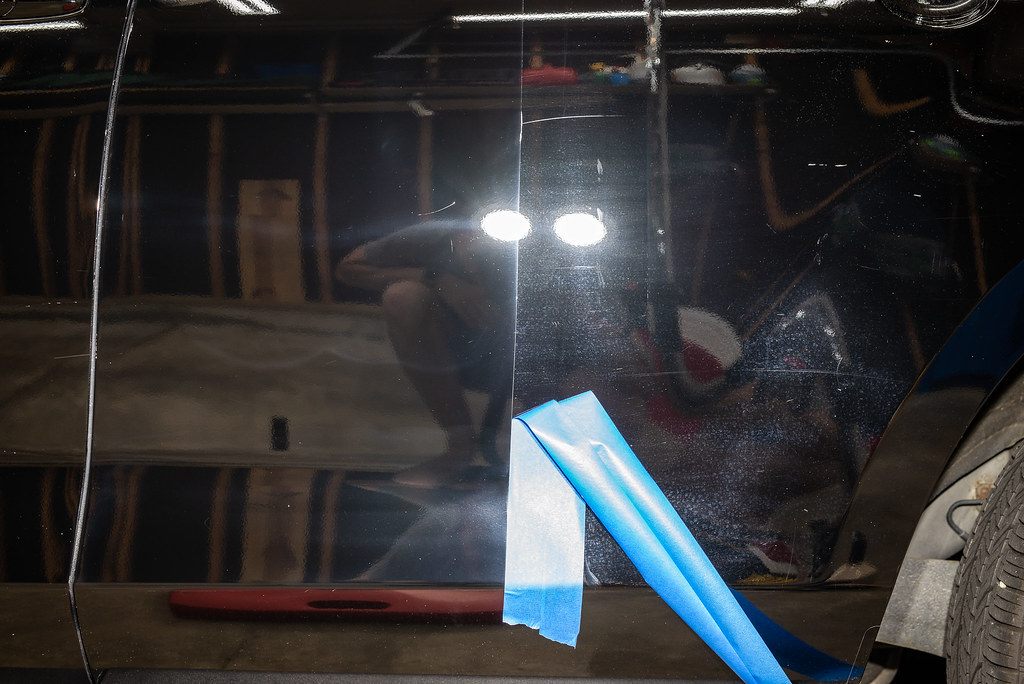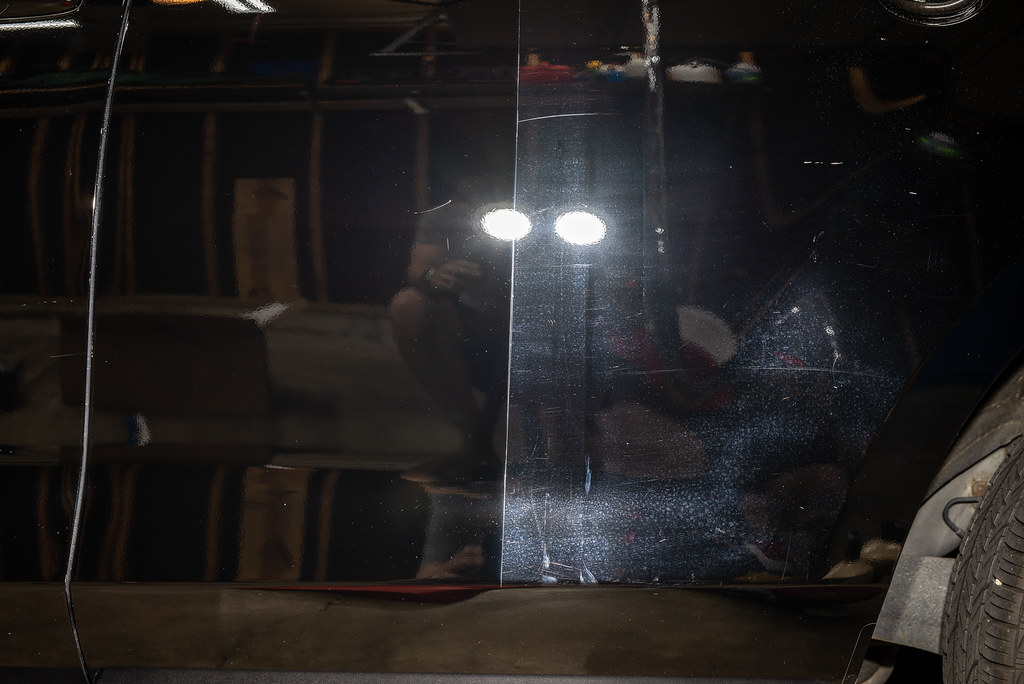Initial Impressions: Buff and Shine Low-Pro Pads
by Zach McGovernThere are a few situations that I can think of where a paint correction job did not involve at least one foam pad. We use them all the time for everything from heavy-duty cutting to spreading a smooth layer of wax. A well made, quality foam pad can stand up to any task you put it through time and time again. The Buff and Shine Low-Pro Foam Pads were designed specifically to stand up to the wear and tear of a large throw polisher like the Rupes Bigfoot or Griot’s Garage BOSS machines, however, they will certainly be just fine on smaller stroke machines as well.
Buff and Shine incorporated a completely new foam formulation for the Low-Pro pad line (Red, Maroon, Orange, Green) that prevents the foam from collapsing. I am a long time user of basic “flat pads” and have thrown out countless pads due to foam collapsing over the years. I just assumed it was something that all pads were subject to, but Buff and Shine say that these pads will outlast and outperform conventional foam pads. The Low-Pro pads have a unique rubber interface between the hook-and-loop backing and the foam. This interface enables the pad to withstand the heat that is generated by long throw polishers that might cause failure in traditional pads. This interface also helps to ensure constant pressure is applied to the surface that is being polished which leads to more consistent results.

As shown in my photo above, the Buff and Shine Low-Pro Pads consist of four unique foam configurations. The green pad, shown on the far left, is very coarse, dense, and sharp foam. This pad is best suited for heavy cutting. When paired with a cutting compound, the green pad will allow for removal of heavy swirl marks, scratches, water spot etchings, and other paint imperfections. Plan to follow up with a finishing polish and pad to further refine the finish after cutting with the green extreme cutting pad.
The orange pad is constructed of a dense, sharp foam that is great for medium cutting. It can be paired with a cutting compound for more bite, or a polish for a better finish. This is a great all-around pad that can level moderate to heavy swirl marks, light scratches, and other imperfections. Depending on the hardness of the paint you are working with and the type of polish or compound you use, you may need to perform an additional step afterward to maximize the clarity and gloss.

The maroon pad is still quite dense and firm feeling, but it the foam is less aggressive making it ideal for polishing away lighter defects. When paired with your favorite polish, this pad makes easy work of cleaning up compounding haze/micro-marring, light swirl marks, holograms, and other minor imperfections.
Finally, the red pad is the softest foam in the Low-Pro pad line. This pad is great for final polishing or applying your favorite glaze, wax, or sealant.

I was excited to put these pads to the test, and what better test subject than a daily driven, jet-black vehicle. This particular vehicle has actually been kept in pretty good condition given that there were really no major swirl marks, however, over the years the paint has taken on a rather dull appearance due to accumulated road grime and some pretty bad water spotting.

I began my test with a Low-Pro Orange pad which, as previously mentioned, is a great choice for medium cutting. I used Meguiar’s M100 and made three overlapping passes in a cross-hatch pattern. This removed all but the heaviest scratches and left a very manageable amount of marring.

I then paired the maroon polishing pad with CarPro Essence for my final polish. The difference in clarity is easily visible after this step as the finish is now free of any micro-marring. Pay attention to my reflection in the paint. I am crouched down behind the camera and inspection lights. On the corrected side, the left side, my body is easily visible. On the uncorrected side, it is nearly impossible to see me. The color transformation is also pretty outstanding as the uncorrected side appears to be more grey than black at this point.

After some brief testing, I have nothing negative to report about these pads. I did notice that the green and orange pads were so firm that they did not contour to curved panels as easily as some other foam pads I have worked with, such as the Uro-Tec line, but perhaps they will break in with more use. The Low-Pro pads all feel very well made, and based on the manufacturer’s claims I am hopeful they will prove to be a more durable alternative to my older, traditional foam pads.










Thanks for posting these before and after photos! I will be buying these products so I can achieve the same results. Appreciate your expertise and detailed descriptions on your work. Nice Job!
MikeBinAZ
Mike – thanks for reading! Hope you enjoy the pads.
These pads produce great results and don’t warp or build up polish like other foam pads. But I won’t buy anymore, the second you hit a curve you’ll cause damage to the panel, there is 0 protection to keep the backing plate from hitting the paint. You simply cant follow even the slightest body curve so it leaves areas unable to be polished correctly.
Hi Ric – thank you for your feedback. As you can see in my photos above, I was utilizing 5.5-inch pads on a Rupes LHR21ES Mark II machine fitted with a 5-inch backing plate. The door shown in the photographs featured both concave and convex curvature and I experienced no reason for concern of potential damage on these curved areas throughout my use(s) with these pads. I had some space between the outer diameter of the pad and the outer diameter of the backing plate, however should you have a slightly larger backing plate I can see where you may have the issues that you described.